I’ve been thinking about flavor a lot lately—from my work at ICE on IBM’s Cognitive Cooking project and menus for upcoming special events, to a new book I’m writing about how chefs develop flavor and create exciting new combinations of ingredients. Yet even outside of work, flavor is at the front of my mind. In fact, it’s the way I remember my vacations.
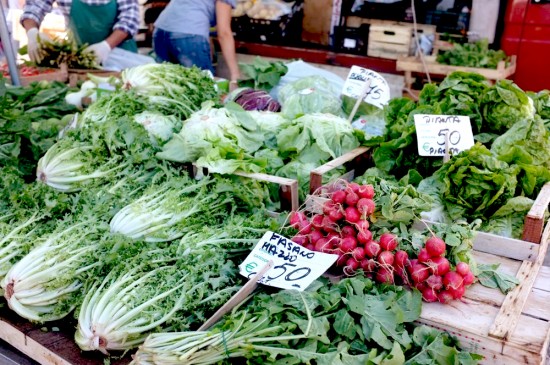
I don’t need an over-priced souvenir or a slew of photos (though I take them anyway); I remember the places I’ve traveled by the unique tastes I experienced there. From past trips to Italy, I can recall the perfect wild strawberry — bright red and absolutely bursting with flavor — eaten straight from the carton at a small market on the streets of Venice. Or a revelatory dessert in San Gimignano — pears poached in locally produced Vernaccia and served with a tangy, salty ice cream made from Pecorino cheese.
Recently, I was lucky enough to return to Italy and experience a whole new range of ingredients and flavors from the Southern part of the country. First in Puglia, where the ladies run the kitchen, I spent an afternoon with Maria Valentini, learning to coax flavor from the simplest of ingredients. The first sign that this would be an edible experience to remember? At Maria’s masseria, Ottava Piccola, my family was greeted by her four-year-old granddaughter. offering up eggs that their chickens had just laid.
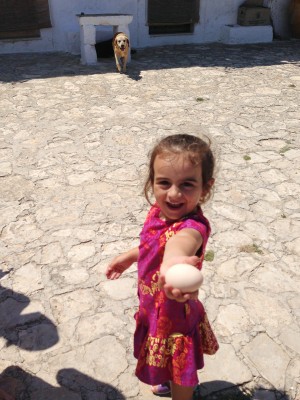
Fava beans grow all over Puglia and the spring bounty is dried and saved to be enjoyed throughout the year. Maria taught me to simmer one small potato with a pound of dried beans, the base for an unusually silky, rich purée — finished with the oil her son makes from the olives grown on their property, of course. In traditional pugliese style, we paired the purée with leaves of chicory, sautéed first over blazing heat, then slowly finished with more olive oil and garlic.
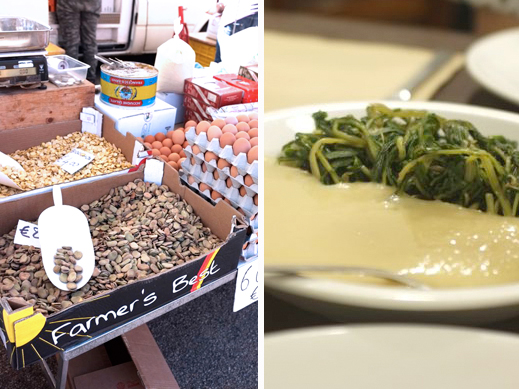
The distinct taste of these simple elements will stay with me for a long time. They serve as an important reminder — as we continue to push for bigger, better and more complex food — of just how delicious simple, perfectly cooked ingredients can be. Beyond the fave e cicoria and hand-rolled pastas for which Puglia is famous, I will remember amazing produce: ripe peaches, figs as big as my hand (that only grow for two delicious weeks a year) and green almonds, eaten directly off the tree.
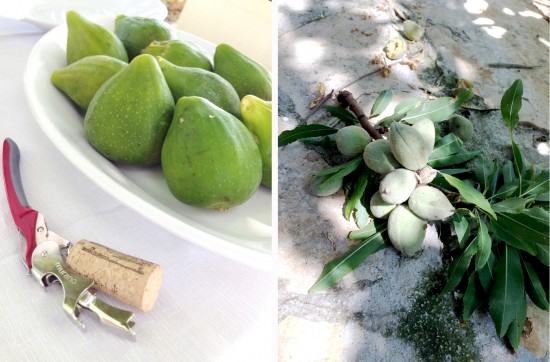
From Maria’s kitchen on the gorgeous eastern coast of Puglia, we drove across the “heel of the boot” to the emerald shores of Maruggio. Here, olive groves and vineyards nearly run into the ocean, so it’s no surprise that the (abnormally salty) sea and the creatures found in it dominate the local cuisine. Again, I had the pleasure of going behind the kitchen doors, this time at Masseria Le Fabriche, as beautiful as any exclusive property you might find in Napa Valley.
Just like at Ottava Piccola, simplicity reigned in the kitchen of Le Fabriche with flavors that I will never forget. We learned to cook orata, a broad-bodied white fish, similar to what we would call sea bream or dorade. Simply baked under a layer of breadcrumbs, garlic, herbs and top quality olive oil, it was very reminiscent of a dish that professional students at ICE prepare in their study of Italian regional cooking. For a small antipasto, we enjoyed the most perfect sformatino I have ever tasted.
In Rome and northern parts of Italy you’ll find sformatini of silky smooth vegetable purées, mixed with egg and baked like a flan. In Puglia, they were coarse and rustic — the freshest possible squash and eggplant were pulled from garden, grated and mixed with sweet, slowly cooked onions, parmesan and just enough egg to hold them together. Before going in the oven, each cake was topped with strips of smoked scamorza.
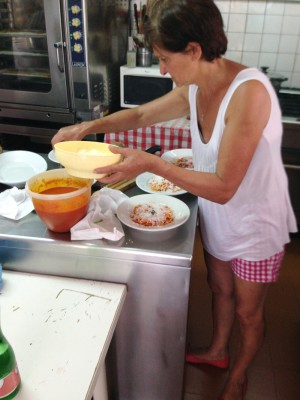
As for our main dish, I knew that orecchiette (a pasta named for its shape, resembling “little ears”) originated in Puglia, but I didn’t realize that it is often prepared with a dense rolled pasta called pizzarieddi. At Le Fabriche these two regional shapes of pasta were the base for a local version of the Sicilian classic, Pasta alla Norma. The sauce for the pasta begins with cubes of eggplant, sautéed until tender in olive oil with garlic and chiles.
Next — where the recipe breaks with Sicilian tradition — cream is added and reduced by half before adding a simple tomato sauce. The result is a deep pink sauce studded with purple chunks of eggplant — sweet, spicy and rich all at once. Once the pasta is added to the sauce (and the texture adjusted with a touch of leftover pasta water), finely grated pecorino is added — balancing the sauce with its signature sharp, salty flavor.
Needless to say, our luggage returned to the States full of packages of orecchiette and pizzarieddi. We’ll be recreating the dish whenever we need a taste of vacation, though we may never quite succeed in recapturing those flavors. Even if we miss perfection in our best Pasta alla Norma efforts, its okay … we’ll just have to return to refresh our memory.
Craving more Italian culinary adventures? Read about Chef Ted Siegel's recent trip to Rome.




